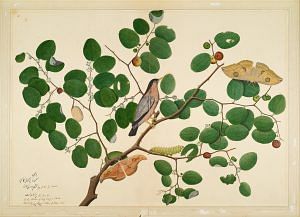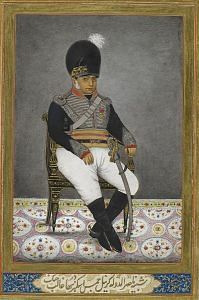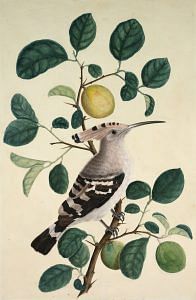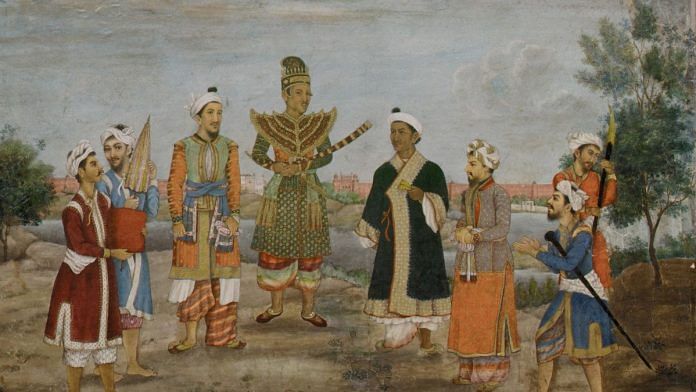A school of painting that emerged in the Indian subcontinent during the late eighteenth century, Company painting was a hybrid style that was influenced by European painting styles as well as existing painting traditions in India, bringing together the visual idioms of Mughal and Rajput miniature painting with Western modes such as Victorian Illusionism and the picturesque. Other influences included prints from Europe as well as the works of landscape painters such as Thomas and William Daniell. Notable artists of the Company painting school included Sewak Ram of Patna and Ghulam Ali Khan of Delhi.

c. 1780, Opaque Colours and Ink on paper. Image courtesy of Wikimedia Commons.
Company painting emerged out of a sustained interaction between Indian and European culture after the British East India Company gained administrative control over Bengal in 1757. Company rule resulted in the loss of courtly patronage for artists in India, which led to artists and craftsmen from the courtly centres in Bengal migrating to cities such as Patna and Murshidabad, which had viable commercial markets. Indian artists who had been trained in the conventions of Western art, such as perspective, chiaroscuro and the picturesque, were absorbed in the administrative apparatus of the East India Company and employed to create an ethnographic record of the people, landscape, culture and traditions of India, including costumes, professions, architecture and street scenes. There were also a number of artists who came from Europe, particularly Britain.

Also read: Temple chariots to thangkas – Appliqué, sewing technique that existed since 12th century in India
Sustained by the East India Company and its officials, such as William Fraser and James Skinner, the Company School had several centres across the subcontinent, with the work influenced by the local subject matter and pre-existing styles. Commonly commissioned subjects included depictions of flora and fauna, personal collections of animals, estates, monumental architecture, banquets and parties, servants, carriages and horses.

Beyond commissions, the artists also began producing standard sets of paintings. Instead of the traditional gouache, the paintings were characteristically made in watercolour and were distinct in their treatment of linear perspective and shading. They were rendered on paper, occasionally on ivory, and bound as folios in albums. Even as it spread over the subcontinent, the Company Painting style remained concentrated in centres of British influence such as Delhi, Lucknow, Varanasi, Kolkata, Murshidabad, Patna, Thanjavur and Tiruchirapalli. It lasted through the nineteenth century, also spreading to colonial centres in Myanmar, Nepal and Sri Lanka, until being replaced by the medium of photography.
A large number of Company paintings were entrusted to the East India Company’s Museum as gifts from Company officials. After its closure, the collection was transferred to the Victoria and Albert Museum, London, which, along with the British Library, contains the largest body of Company paintings.
This excerpt is taken from MAP Academy’s ‘Encyclopedia of Art’ with permission.
The MAP Academy is a non-profit, online platform — consisting of an Encyclopedia, Courses and a Blog — which encourages knowledge building and engagement with the visual arts of the region.



